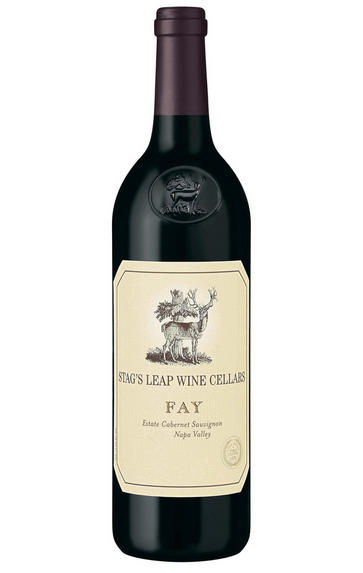
2013 Stag's Leap Wine Cellars, Fay Cabernet Sauvignon, Napa Valley, California, USA
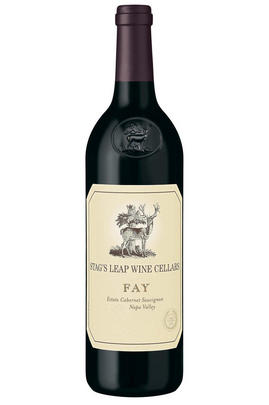
Critics reviews
95/100 points - Robert Parker - December 2015
95/100 points - Robert Parker - December 2015
About this WINE
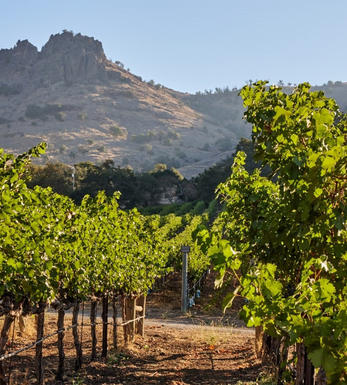
Stag's Leap Wine Cellars
Warren Winiarski gave an up a promising academic career in Chicago to pursue his dream of making wine. He learnt his trade at Robert Mondavi before setting up Stag's Leap Wine Cellars in the heart of the Napa Valley in 1972. Success was instantaneous when the 1973 vintage of Cabernet Sauvignon took first place over leading red Bordeaux at a major comparative tasting in Paris in 1976.
In 1986 Warren Winiarski purchased the adjoining Fay Vineyard which, in what is known today as the Stag's Leap District Appellation, which had been planted by Nathan Fay in 1961. Cask 23, the proprietary red wine blend made only in select vintages, is a blend of Cabernet Sauvignon from the Stag's Leap vineyard and the Fay Vineyards. Warren coined the descriptive phrase 'iron fist in a velvet glove' to describe his polished but sturdy Cabernets. Winemaker Michael Silacci joined the winery in 1995, and together with assistant winemaker Julia Winiarski is producing outstandingly complex, multi layered wines that are amongst the very finest in California.
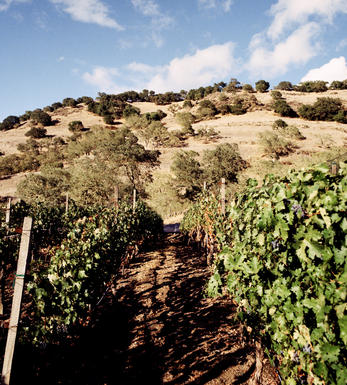
Napa Valley
North Coast's Napa Valley is California's most famous viticultural area (AVA), claiming some of the most expensive agricultural land in the world and producing wines of ‘cult’ status.
Its 16,000 ha of vines lie over a strip (40 miles long-5 miles wide) of diverse soils (clay, gravely, volcanic), with its northernmost end on the side of Mountain Helena and its foot in San Francisco Bay. The valley is framed by two mountains ranges Vaca (to the north) and Mayacamas (to the south), yet the main climatic influence is the cool wind and fog that is sucked in from San Pablo Bay during the afternoon, allowing grapes to ripen slowly and evenly.
The area enjoys a variety of unique microclimates, as temperatures can vary dramatically as much as 15 degrees, from the north to the south end of the valley. These differences have led to the creation of several sub-AVAs (14 in total) including:
Atlas Peak, Chiles Valley District, Diamond Mountain District, Howell Mountain, Los Carneros, Mt. Veeder, Oakville, Rutherford, St. Helena, Spring Mountain District, Stags Leap District, Yountville, Wild Horse Valley and Oak Knoll District. The Calistoga AVA is still pending approval.
Both the “Napa Valley” designation and the sub-AVA name must appear on the wine label simultaneously, with the exception of wines from the Carneros AVA, which is shared between the Napa Valley and the Sonoma County.
Cabernet Sauvignon is the undisputed king of Napa grapes, occupying over 45% of the vineyard acreage, followed by (predominantly) Chardonnay, Sauvignon Blanc, Chenin Blanc, Riesling, Zinfandel, Merlot, Cab. Franc and to a lesser extent Petite Sirah, Sangiovese, Barbera, Dolcetto.
Recommended Producers
Frog's Leap, Dominus, David Ramey, Viader, Stag's Leap Cellars, Paras Vineyards, Heitz.
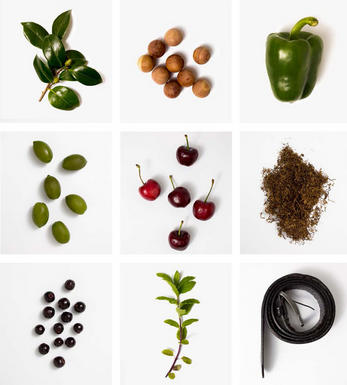
Cabernet Sauvignon
The most famous red wine grape in the world and one of the most widely planted.
It is adaptable to a wide range of soils, although it performs particularly well on well-drained, low-fertile soils. It has small, dusty, black-blue berries with thick skins that produce deeply coloured, full-bodied wines with notable tannins. Its spiritual home is the Médoc and Graves regions of Bordeaux where it thrives on the well-drained gravel-rich soils producing tannic wines with piercing blackcurrant fruits that develop complex cedarwood and cigar box nuances when fully mature.
The grape is widely planted in California where Cabernet Sauvignon based wines are distinguished by their rich mixture of cassis, mint, eucalyptus and vanilla oak. It is planted across Australia and with particular success in Coonawarra where it is suited to the famed Terra Rossa soil. In Italy barrique aged Cabernet Sauvignon is a key component in Super Tuscans such as Tignanello and Sassicaia, either on its own or as part of a blend with Sangiovese.


Buying options
Add to wishlist
Description
The first characteristic to hit me here is the quantity and purity of fruit on the nose, it’s like a top Pauillac. If I was told this was a Super Second I would be very pleased indeed. The palate is equally as impressive, dense with an intensity which verges on high quality bitter chocolate texture such is the youth and promise of the wine – a very good sign. The finish is taut and fine, as one would expect on a wine with such clear promise and quality but with an additional whip of fruit and fine tannins rounding the wine off beautifully. 2020 – 2030+
Gary Owen, Private Account Manager
Stag’s Leap Wine Cellars is a famous Napa valley “First growth” producing wines of exceptional beauty, full of New World vivacity yet balanced by Old World sensibility. Warren Winiarski coined the descriptive phrase 'iron fist in a velvet glove' to describe his polished but sturdy Cabernets, marrying power and elegance.
2013 was a classic vintage, with textbook weather conditions, though we do see a 30% drop in production from the 2012. Commenting on the 2012 & 2013 harvests, Robert Parker states “… as a wine critic commenting only on the quality, these are two very, very exciting vintages that will provide enormous pleasure over the next three decades. Readers who can afford the entrance fees will love these wines - make no mistake about that!”
Robert Parker has accordingly given the 2013 (& 2012) vintage the highest ever scores for these wines.
The 2013 release celebrates 40 years since the controversial (at the time) 1976 “Judgement of Paris” tasting (particularly the S.L.V. bottling which displays a commemorative label) when the 1973 vintage of S.L.V. Cabernet Sauvignon took first place over leading red Bordeaux.
The impact of the tasting for American wines was immediate, catapulting Californian wines onto the world stage by illustrating that exceptional wines could come from somewhere other than traditionally sacrosanct French terroir.
Nevertheless, the estate has come a long way in the last 40 years producing some of the best wines to come out of California from some of the best and most envied terroir. Winemaker Michael Silacci joined the winery in 1995, and together with assistant winemaker Julia Winiarski is producing outstandingly complex, multi layered wines that are amongst the very finest in California, if not in the world.
Warren Winiarski gave up a promising academic career in Chicago to pursue his dream of making wine. He learnt his trade at Robert Mondavi before setting up Stag's Leap Wine Cellars in the heart of the Napa Valley in 1972.
In 1986, Winiarski purchased the adjoining Fay Vineyard which, in what is known today as the Stag's Leap District Appellation, which had been planted by Nathan Fay in 1961. S.L.V. is the name-sake single vineyard wine, a vineyard famed as one of the great sites of Napa valley. Cask 23, the proprietary red wine blend made only in select vintages, is a blend of Cabernet Sauvignon from the Stag's Leap Vineyard (S.L.V) and the Fay Vineyards. Artemis is a Cabernet Sauvignon named after a Greek goddess associated with the protection of wild animals, especially the sacred Stag, a wine produced for earlier consumption.
wine at a glance
Delivery and quality guarantee